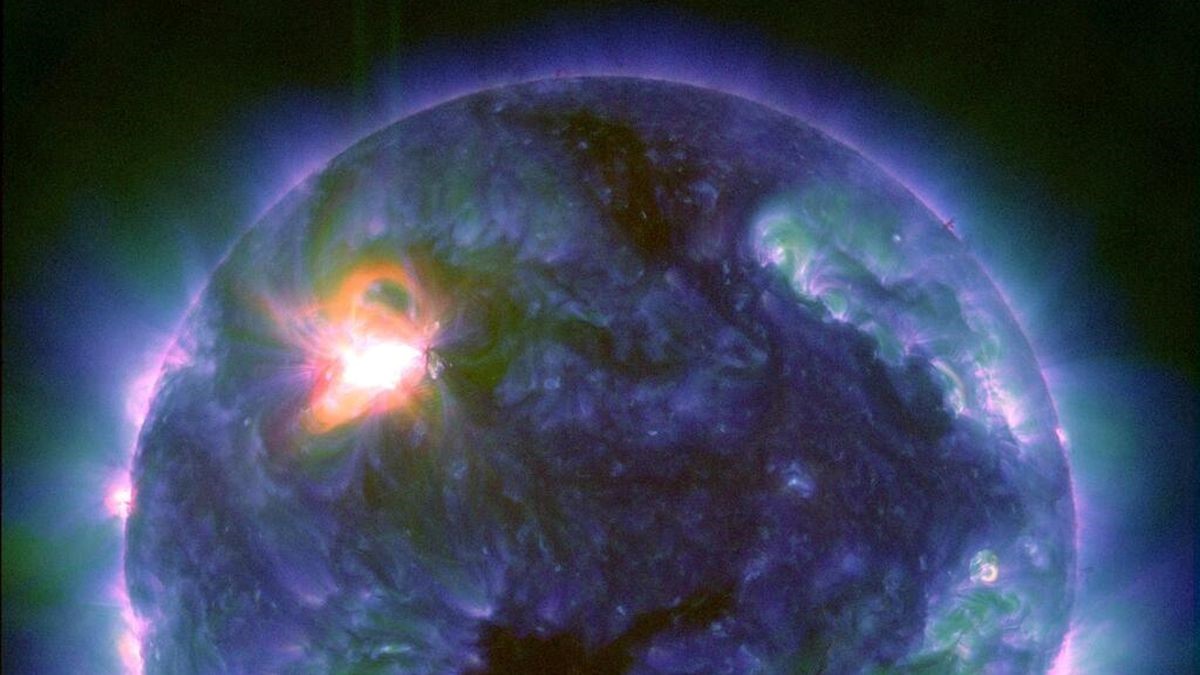Description

Disclaimer: Copyright infringement not intended.
Context
Powerful X-class solar flare slams Earth, triggering radio blackout over the Pacific Ocean
Details
Solar flares
- Flares happen when the powerful magnetic fields in and around the sun reconnect.
- They're usually associated with active regions, often seen as sun spots, where the magnetic fields are strongest.
Classification
- Flares are classified according to their strength.
- The smallest ones are B-class, followed by C, M and X, the largest.
- Similar to the Richter scale for earthquakes, each letter represents a ten-fold increase in energy output.
- So an X is 10 times an M and 100 times a C.
- Within each letter class, there is a finer scale from 1 to 9.

Impacts strength wise
- C-class flares are too weak to noticeably affect Earth.
- M-class flares can cause brief radio blackouts at the poles and minor radiation storms that might endanger astronauts.
X-class
- Although X is the last letter, there are flares more than 10 times the power of an X1, so X-class flares can go higher than 9.
- A powerful X-class flare like that can create long lasting radiation storms, which can harm satellites and even give airline passengers, flying near the poles, small radiation doses.
- X flares also have the potential to create global transmission problems and world-wide blackouts.
Earlier events
- The most powerful flare on record was in 2003, during the last solar maximum.
- It was so powerful that it overloaded the sensors measuring it.
- They cut-out at X17, and the flare was later estimated to be about X45.
Latest Event
- On March 28, Earth was hit by an X-class solar flare that was strong enough to ionize part of the planet's atmosphere.
- The flare, which peaked at 4:56 p.m. ET, was categorized as an 1 flare.
- The explosion was so powerful that it ionized the top of Earth's atmosphere, resulting in a "deep shortwave radio blackout over the Pacific Ocean,"
- The solar outburst was also accompanied by an enormous belch of plasma known as a coronal mass ejection (CME).
- The abundance of back-to-back solar events has led scientists to think the sun may have entered its explosive era of peak activity, known as solar maximum as X-class flares are most common during solar maximum, which is part of the sun's 11-year solar cycle.

Solar maximum
- Over the course of 11 years, the magnetic field between the Sun’s northern and southern hemispheres winds up until it becomes so dense that the hemispheres flip. The north hemisphere becomes the south, and vice versa.
- This flipping point marks the Solar Maximum. It occurs approximately halfway through the solar cycle.
- It’s associated with a greater number of sunspots observable on the surface of the sun.
|
PRACTICE QUESTIONS
If a major solar storm (solar flare) reaches the Earth, which of the following are the possible effects on the Earth ?
- GPS and navigation systems could fail.
- Tsunamis could occur at equatorial regions.
- Power grids could be damaged.
- Intense auroras could occur over much of the Earth.
- Forest fires could take place over much of the planet.
- Orbits of the satellites could be disturbed.
- Shortwave radio communication of the aircraft flying over polar regions could be interrupted.
Select the correct answer using the code given below:
- 1, 2, 4 and 5 only
- 2, 3, 5, 6 and 7 only
- 1, 3, 4, 6 and 7 only
- 1, 2, 3, 4, 5, 6 and 7
Answer 3
|
















